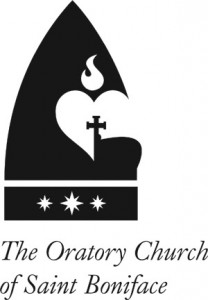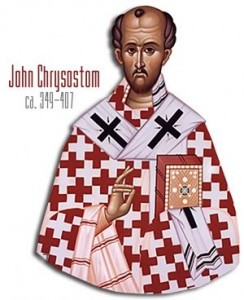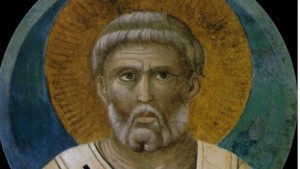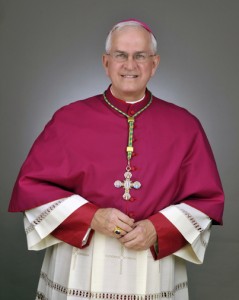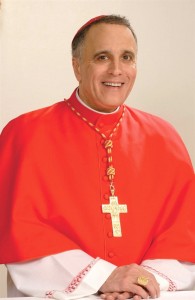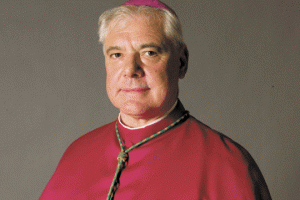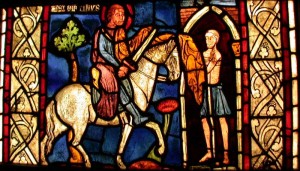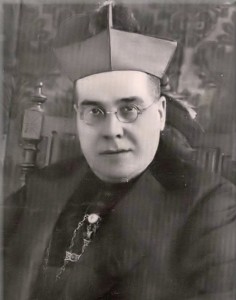 Today we have two feasts that may not immediately be perceived as connected: the Dedication of the Basilicas of Saint Peter and Saint Paul and the liturgical memorial of Saint Rose Philippine Duchesne (1769-1852), who had the desire to live a life of contemplation.
Today we have two feasts that may not immediately be perceived as connected: the Dedication of the Basilicas of Saint Peter and Saint Paul and the liturgical memorial of Saint Rose Philippine Duchesne (1769-1852), who had the desire to live a life of contemplation.
To make a little sense of what we have today let’s step back nearly ten days ago to the liturgical memorial of the Dedication of Lateran Basilica. On that feast we noted that the church was dedicated to Saint John the Baptist and it recalls for us the ministry of the bishop of Rome to lead, teach and sanctify. Key in that feast is not the praise of architecture but what John the Baptist said: I must decrease and He [Jesus] must increase. If we forget these words then we’re lost. The petition in the Prayer after Communion asked God to use the earthly sign of the Church as an instrument of sacramentality that would transform us into a new temple bestowing a new humanity upon for the purpose of being in glory with the Trinity.
With the liturgical memorial of the two basilicas of Peter and Paul —another liturgical day on which we do not merely honor bricks and mortar— we have another aspect of the Christian life being brought forward: having knowledge of divine things which lead to a life of grace. The feast, therefore, is a reminder that our faith has a genealogy —it is rooted in the apostolic witness of Peter and Paul. We follow an experience; we are lead to Jesus by those who knew Him.
The anniversary of the dedication of the two basilicas keeps our hearts on the source of our Christian life: the proclamation of the Word and the consumption of the Eucharistic Sacrifice for our eventual life in heaven but also to do what Jesus did. What the Apostles did for us so long ago continues to happen today. From the dual altars of the ambo and altar we are nourished and in turn we are sent out, like Peter and Paul, to cooperate with the action of the Holy Spirit.
Pope Leo the Great on the Memorial of the Dedication of the Basilicas of Saint Peter and Saint Paul once said:
“From this field [the Church] those two famous shoots of the divine seed burst forth into a great progeny, witnessed by thousands of blessed martyrs. To emulate the apostles’ triumph, these martyrs have adorned our city far and wide with people clothed in purple and shining brilliantly, and they have crowned it with a diadem fashioned by the glory of many precious stones….
Our experience has shown, as our predecessors have proved, that we may believe and hope that in all the labors of the present life, by the mercy of God, we shall always be helped by the prayers of our special patrons. Just as we are humbled by our own sins, so we shall be raised up by the merits of these apostles.”
Where does Saint Rose Philippine fit? This wise virgin who, while waiting for Jesus lit the lamp by a life of charity and missionary zeal making her Bridegroom known to a world unfamiliar with His word of Life. She was a light in darkness.
Remember, Saint Rose is an American saint buried in Saint Charles, Missouri. She is known for her devotion to the Blessed Sacrament, an intense prayer life, and being a missionary. If you are listening to the talks being given in Mexico these days by the bishops and the Pope (via satellite) being a person of prayer and being missionary is the existential vocation of the Church as she is living and proposing what has been left to us by Jesus.
Hence, our Christian lives in the American context is framed by the Baptist’s exhortation to mature in the Paschal Mystery all the while being formed by the Cross and following the Jesus, and living what’s been given: mercy in the world in which we find ourselves AND by the missionary zeal of an American nun.
